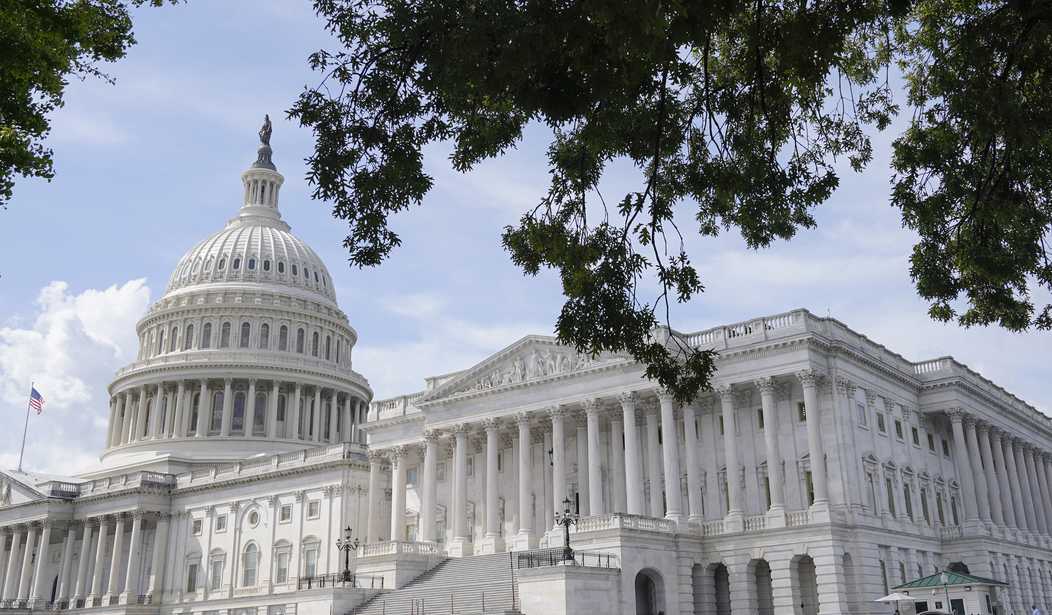The state of Florida had a population of 22,610,726 as of July 2023, according to the U.S. Census Bureau. That ranked third among all states -- exceeded only by Texas, which had a population of 30,503,301; and California, which had a population of 38,965,193.
As of this September, federal, state and local governments in this country employed a record total of 23,421,000 individuals, according to the Bureau of Labor Statistics.
In other words, government payrolls were populated by more people than lived in the state of Florida or in any of 47 other states. Only California and Texas had populations that exceeded the number of people who work for government in this country.
There were a total of 159,105,000 people working in nonfarm jobs in the United States last month, according to the BLS. The record 23,421,000 working for government equaled 14.7% of that total.
More than one out of every seven workers in America worked for government.
In January 1939, the first month for which the BLS has published employment data, there were 29,923,000 total nonfarm workers in this country, and 3,988,000 of them -- or 13.3% -- worked for government.
At that time, government workers accounted for two out of every 15 workers.
By contrast, in September 1979, there were 90,327,000 total nonfarm workers in the United States and 16,128,000 -- or 17.85% -- worked for government.
So the percentage of non-farmworkers working for government now is smaller than it was in 1979, while the actual number is larger.
Recommended
Of the record 23,421,000 people who worked for government in the United States this September, 2,999,000 worked for the federal government. Another 5,483,000 worked for state governments; and 14,939,000 worked for local governments.
The state-government employment level of 5,438,000 was an all-time record. So, too, was the local-government employment level of 14,939,000. (Federal employment hit an all-time high of 3,435,000 in May 1990, a census year.)
Those approximately 14,939,000 individuals who worked for local governments included 8,139,700 who worked in the local government educational sector and 6,799,500 who worked for local government in non-education-related jobs.
As the number of people working for government in this country was climbing to record levels in recent years, so, too, was government spending.
According to data published by the White House Office of Management and Budget, total federal, state and local government spending in the United States was $5.7809 trillion in fiscal 2015. By fiscal 2019, before the COVID-19 pandemic hit, it had climbed to $6.878 trillion. In fiscal 2020, the pandemic year, it hit $8.8838 trillion. In fiscal 2021, it climbed again to $9.1 trillion. In fiscal 2022, it declined modestly to 8.8953 trillion. Then, in fiscal 2023, it rose again to $9.0129 trillion.
A year ago, this column reported on a Congressional Research Service report titled "Current Federal Civilian Employment by State and Congressional District." This report, said CRS, provides "estimates for how many civilian federal workers live in each congressional district."
Not surprisingly, as this column noted, the report showed that the seven congressional districts with the highest percentages of federal employees were all in the Virginia and Maryland suburbs of Washington, D.C., and that all of them had elected Democrats to Congress.
This September, the CRS released an updated version of this report. It revealed the same thing: The seven congressional districts with the highest percentage of federal civilian workers in its workforce are all in the suburbs of Washington, D.C. -- and all are represented by Democrats in the U.S. House of Representatives.
In Maryland's District 5, according to this CRS report, 18.18% of all workers work for the federal government. It is represented by Democratic Rep. Steny Hoyer, the former House majority leader. In Virginia's District 8, 16.67% of all workers work for the federal government. It is represented by Democratic Rep. Don Beyer. In Maryland's District 8, 14.48% of workers work for the federal government. It is represented by Democratic Rep. Jamie Raskin. In Virginia's District 7, 13.59% of workers work for the federal government. It is represented by Democratic Rep. Abigail Spanberger.
In Maryland's District 4, 12.29% of workers work for the federal government. It is represented by Democratic Rep. Glenn Ivey. In Virginia's District 11, 12.06% of workers work for the federal government. It is represented by Democratic Rep. Gerald Connolly. In Maryland's District 3, 10.72% of the workers work for the federal government. It is represented by Democratic Rep. John Sarbanes.
Imagine what our Congress would be like if 10% or more of the workers in every congressional district worked for the government.

























Join the conversation as a VIP Member